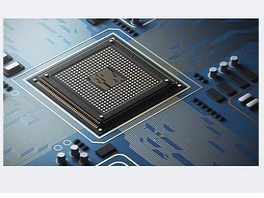As far as we know, crushed copper is stronger than electrolytic copper and can withstand many times of bending. Because the crystal of crushed copper is horizontal, it can be more resistant to bending. Therefore, if there is an FPC that requires movement, it should be used. The crushed copper will be more quality guaranteed.
For single-layer FPC, we have indeed found and confirmed that the quality of crushed copper is much better than that of electrolytic copper, but if it is FPC with double-layer copper foil or more, is this still the case? Have the judges tried to understand in detail how the double-layer FPC is made? As far as Shenzhen Honglijie understands, according to the current industrial technology, those vias connected between the FPC copper foils of more than double layers should also be processed by electroplating copper.

Therefore, even if we require that the raw material of copper foil is crushed copper, after the FPC molding process, most of the FPC copper foils with more than double layers will be converted into [rolled copper + electrolytic copper], which will greatly reduce Its resistance to bending characteristics.
It depends on the weight of the copper foil used. If 1/3 ounce of copper foil is used, the thickness of the original copper foil is only about 12um. Generally, the copper foil must be blackened before FPC electroplating, and the surface of the copper foil should be roughened. After treatment, the rough copper foil surface is electroplated with an electroplating copper thickness of about 10um, so there was originally 12um RA copper. Because of the planing process, only 2-6um RA copper may remain, plus the electroplating operation, The lattice arrangement of the original crushed copper will be rearranged towards the vertical direction of the electrolytic copper, that is to say, after the original crushed copper is electroplated, the bending resistance of the crushed copper is almost scarce, so Regardless of whether the FPC above the double-layer circuit is made of rolled copper or electroplated copper, the final FPC characteristics are actually almost the same as that of electroplated copper.
Of course, some people may use 1/2 ounce copper foil with a thickness of about 18um. Even if it is removed and then electroplated, the original horizontal lattice arrangement of crushed copper should remain more, but the disadvantage is that the thicker the copper. The harder the foil.
The picture below shows the use of rolled copper (RA) after electroplating, but the use of an anti-plating material mask to prevent it from re-electroplating, so the copper surface looks relatively rough because it has been removed.
In order to use rolled copper (RA) but use an anti-plating material mask to prevent it from re-electroplating, its copper surface looks relatively rough because it has been removed.
Is there any way to prevent the copper foil that is easy to bend and break without going through the electroplating process and keep the original rolled copper (RA)?
This is of course possible, as long as the anti-electroplating layer is printed on the place where the copper is not to be electroplated before the copper electroplating on the PCB board, but this may also cause the following problems:
1. The price will become expensive. This must use selective electroplating, selective electroplating will be more than the original process of printing anti-electroplating copper.
2. The copper foil in the unplated area will become thinner. Because the pre-process of electroplating copper is a planing operation of roughening and blackening the surface, the thickness of the copper foil will be shaved off a little.
3. There will be a problem of the difference in the thickness of the copper foil. There will be a significant thickness difference at the junction of selective electroplating and non-electroplating. Depending on the electroplating time, the areas with electroplated copper will be thicker, which will easily cause stress to concentrate on the electroplated and unplated areas. When designing, this step should be avoided in areas with bends and activities.